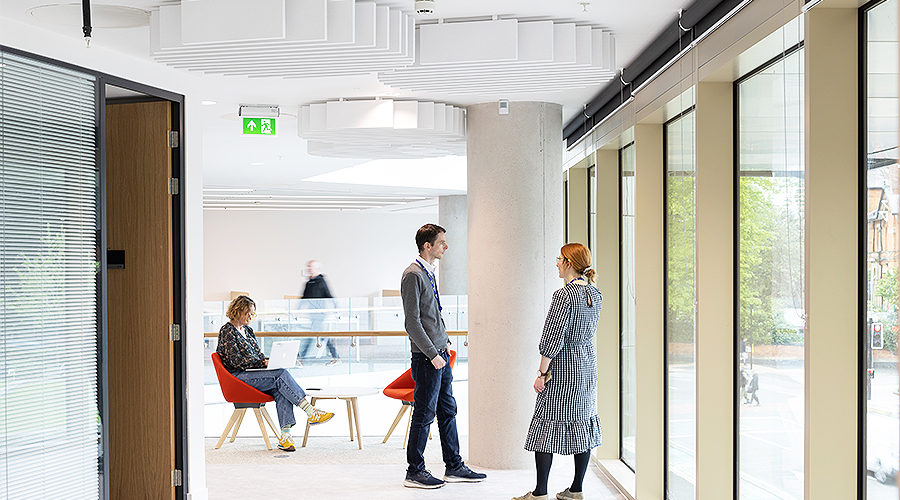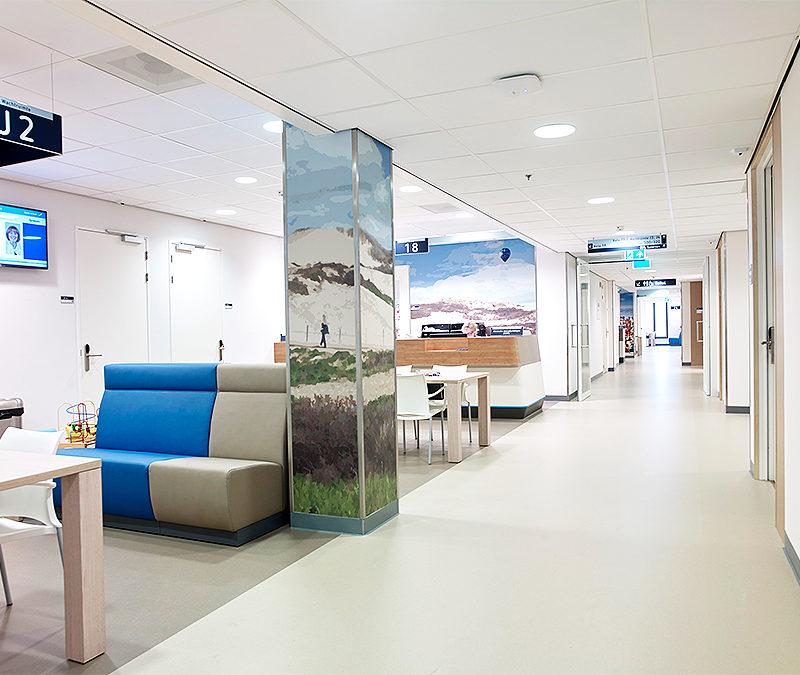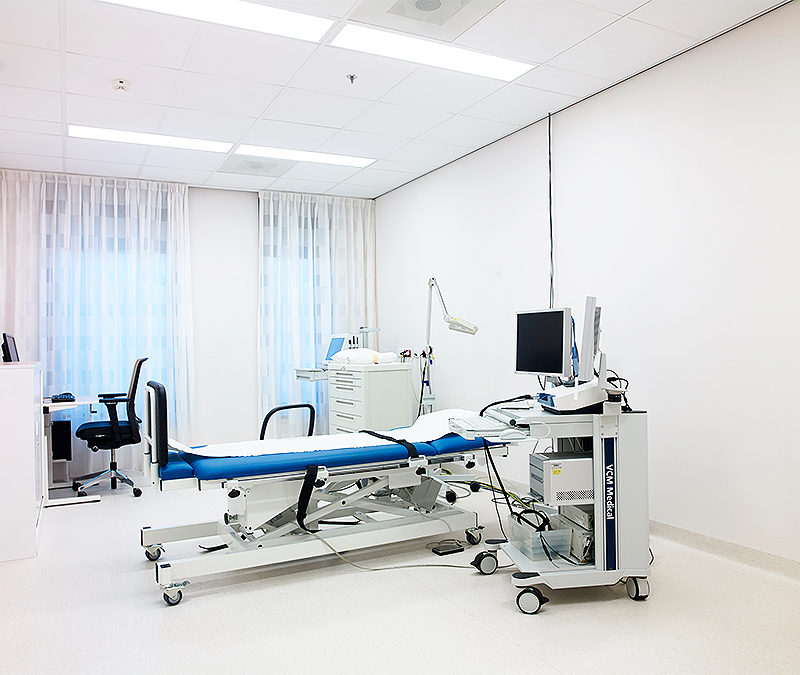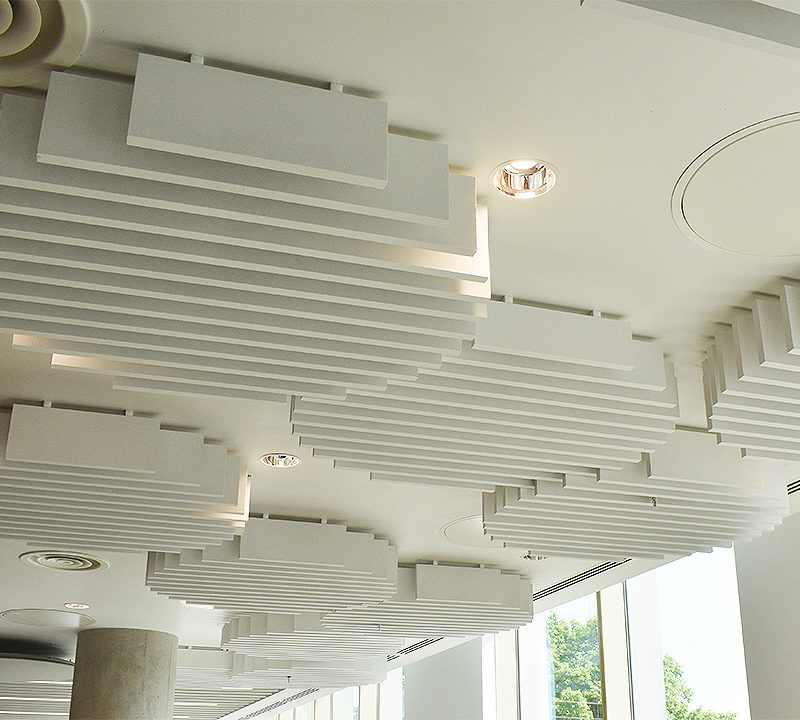Alongside the importance of hygiene, room acoustics need to be at the forefront of the design and specification of ceilings within healthcare buildings. Simon Humphrey, Technical Manager at leading acoustic ceiling manufacturer OWA UK, explains what specifiers need to consider and why early engagement with the supply chain can help.
OWA UK
From specialist clinics and hospital wards to doctor’s surgeries, patient waiting areas and administrative offices, the healthcare sector comprises many different types of facilities, each with their own design requirements, which, in turn, influences the building materials required.
The acoustic requirements also vary depending on the function of the room but the overall guidance is clear – good acoustic design is essential in creating a safe space in which patients can rest and recover. They need to be protected from loud or disturbing noises, either from outside or from within, and with many healthcare buildings incorporating often noisy equipment and a high level of footfall, the need for adequate sound proofing can’t be underestimated.
There is also the issue of privacy, in terms of maintaining both patient dignity and confidentiality, whilst also ensuring speech intelligibility. Furthermore, in communal areas specifically, it’s vitally important that staff and patients can clearly hear any announcements and alerts.
These issues are addressed in HTM 08-01: Acoustics and the choice of interior building materials, such as ceilings, have an important part to play in improving acoustic performance and creating a safe and comfortable space. The Health Building Note 00-10 Part B: Walls and Ceilings also outlines the policy and performance requirements for walls and ceilings used in healthcare settings and also highlight the importance of good design. This is particularly important in non-critical areas and visitor spaces where the overall design of a room needs to enhance, rather than dimmish, the experience of its users. In terms of ceiling designs, this is where the use of acoustic baffles, rafts and canopies can make a real impact.
Navigating these standards can be a complex process, which is why early engagement within the supply chain can make a huge difference to keeping both new-build and refurbishment projects on track and on budget.
Sound choices
A suspended ceiling can provide excellent soundproofing between rooms that are above, below and adjacent.
In adjacent areas, careful consideration needs to be given to the use of wall partitions, which, in many cases, extend to the suspended ceiling but not as far as the ceiling slab above. The ceiling construction needs to be planned in such a way to avoid an ‘acoustic shortfall’ between rooms caused by the transmission of sound through the ceiling cavity.
Suspended ceilings combined with a high-performance ceiling tile with excellent sound insulation properties, and supported by the technical expertise of the supply chain, can provide the answer.
The choice of ceiling tile depends greatly on the functionality of the room in question but a popular choice for healthcare environments is the use of mineral ceiling tiles. These tiles comprise a mineral-fibre ceiling panel with a smooth fleece-covered visible face. The variable density of mineral fibre aids great sound absorption and there are systems available, such as our own Sinfonia range, which offer various levels of acoustic performance to suit different areas while offering an attractive uniform appearance. This enables interior design schemes to work in terms of both acoustics and aesthetics.
Metal ceiling tiles are also an effective choice and again, can offer exceptional design flexibility and enhanced durability, which makes them ideally suited to reducing maintenance costs. Constructed from robust metal, such as galvanized steel or aluminium, metal ceiling tiles can be fitted with a sound-absorbing fleece backing and an acoustic pad to effectively maximise sound absorption and are available in a wide range of perforations to achieve different levels of acoustic performance.
Open-plan areas can provide a specific challenge, but through the careful consideration of acoustic ceiling systems, it is possible to create zones of different acoustic performance and listening conditions. The use of acoustic ceiling rafts, canopies and vertical baffles can be extremely effective and can be designed and positioned to complement the soundproofing effects of dividing the room using furniture and partitions.
Investing in innovation
Acoustic suspended ceilings have the added benefit of concealing essential pipework and utilities or, in the case of refurbishment projects, disguising an unsightly original ceiling. Acoustic ceiling tiles can also aid internal light reflection and can be integrated with bespoke lighting solutions, not only improving the look of an area but creating a more comfortable and accessible space that may boost wellbeing amongst all its users.
As well as accessing technical support, close collaboration with product manufacturers will also highlight the many new innovations available that can bring specific benefits to the healthcare sector. For example, ceiling tiles that are durable enough to withstand regular cleaning but can also offer enhanced hygiene by inhibiting the spread of bacteria and fungi. Specialist solutions, such as our own Humancare range, are ideally suited for demanding environments like theatres, laboratories and other cleanrooms, all while offering exceptional acoustic control.
Compliance through collaboration
Acoustic performance is a key consideration for the effective design of healthcare buildings but must be viewed alongside the other significant challenges, such as fire safety, sustainability, cost and the reduction of ongoing maintenance requirements. Through close and early collaboration, specifiers can tap into the expertise within the supply chain to identify acoustic ceiling products that sound good in both theory and in practice.










